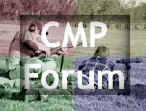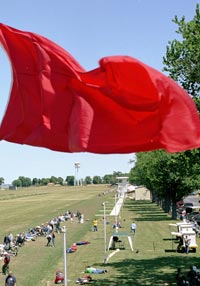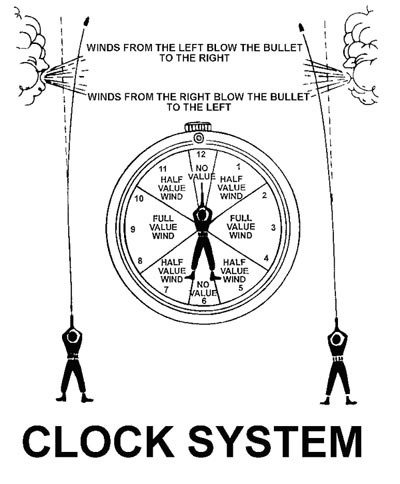

| We want your feedback! Please let us know what you think about TFS. Do you have an interesting story or article that you would like to share? If so, please let us know!
|
Reader Comments:
I enjoy the TFS. In fact, occasionally I like to print some of the articles to be able to review them in the future.
James L. M.
Whenever we come back in from the field it’s always a good day when “The First Shot” is in. I drill the guys in the fundamentals – many of which I learned and fine tuned at CMP matches – and it comes back in spades out here when it really counts!
Dean H.
LTC - US Army
Security Advisor
Kabul/Afghanistan
Finally caught up with the October '06 story: A Rifle For Shifty. It was simply one of the best things I've read. As someone who had two uncles in combat in WWII, one air corps and one infantry, I will forever believe those men were heroes of the first echelon. Anything any of us can do for any of them is simply the least we can do.
Steve R.
Birmingham, Alabama
The article about Bill Krilling was very good, a great shooter, coach and a gentlemen to boot!
Ruth S.
Thanksfor the great stories and tips. Even old dogs can learn new tricks. This is great for keeping the CMP active.
Tim H., AZ
I just read the article on slings. Very good! Please include other "how to" items in the future.
David S.
Moxee, WA
The story of the M1 rifle that was presented to Shifty of the 101 airborne makes me proud to be part of the shooting community. Thank you for adding it to the TFS.
Mike S.
What a great article: “A Rifle for Shifty” … that has to be one of the best stories I’ve read in quite some time. Thanks for publishing it.
Alex N.
Thank You again Christine, very good articles.
JM
Ms. Elder, just a note to say that there are few things I look forward to receiving by email, and the Shooting News publication is one of them!
It is always a high quality publication with a nice mix of text and image, about interesting things and folks.
Keep up the good work!
Phil B., Ph.D.
Annapolis, MD
That was a great story! Thanks for publishing it.
Regards from Dakota,
Jim S.
PS: I forwarded it to all my shooter friends.
This story about the "Gift for Shifty" is one of the best stories I have read so far....An example of selfless appreciation for the WW2 vets that helped make this such a wonderful country...God bless our past and present troops.
Ron W.
The story "A Rifle For Shifty" really hit me. What a wonderful tribute to one of this countries nearly forgotten heroes.
Kudos to all who were involved with finding and presenting him with "his" rifle. Thanks to those of you who shared the story.
Regards,
John S.
I thoroughly enjoyed reading A Rifle for Shifty. We owe our WW2 veterans a debt we can never repay. I wish I could provide all of them with a similar token of appreciation.
Jeff C.
|
|
|
 |

Reading the Wind (Part 2, 600 Yard Firing)
By SSG Emil Praslick, USAMU
|
 |
In the previous article, “Reading the Wind (Part 1)” we discussed the tactics and strategy needed to negotiate the wind during rapid fire (primarily 300 yards). The goal during rapid fire is to center your group in the 10 and X-ring. Your windage setting must therefore be a compromise between what the wind is doing at the beginning of firing time and what you believe it will be at the end of firing time. The 600 yard slow fire stage needs a slightly different approach and skill set to maximize one’s performance. The ability to “read” the conditions, coupled with feedback from your last shot, make this stage one of the most intellectually challenging in highpower competition.
The basics of reading the wind still apply at the 600 yard line. Shortly after arriving at the ready line, you should determine the speed, direction and value of the wind. The first task, determining wind speed, has seen competitors arrive at the firing line toting the latest in meteorological marvels. I submit that the human eye and well-trained powers of observation are the equal of any overpriced anemometer (a fancy word for a “wind meter”). The following list of the effects of the wind and their corresponding velocity can be found in the 1931 Service Rifle Pamphlet produced by the US Army Infantry Team. The information is as relevant now as it was then.
- 0-3 mph Wind hardly felt, but smoke drifts
- 3-5 mph Wind felt lightly on the face
- 5-8 mph Leaves are kept in constant movement
- 8-12 mph Raises dust and loose paper
- 12-15 mph Causes small trees to sway
 |
The direction must next be determined. Flags are a useful utility in determining wind direction and value. When discussing the wind, we use the “clock system”. The direction of fire is always “12 o’clock”. The following picture illustrates the direction of the wind and its Value relative to your direction of fire.
The Value of the wind is as important as its speed when deciding the proper windage to place on the rifle. A 10 MPH wind from “12 o-clock” has No Value, hence it will not effect the flight of the bullet. A 10 MPH wind from “3 o’clock”, however, would be classified as Full Value. Failure to correct for a Full Value wind will surely result in a less than desirable result.
The first question you must ask yourself is, “how much is the wind worth?” The effect of the wind on your bullet is a result of a combination of factors, such as: the caliber and weight of the bullet, its ballistic efficiency and the time of flight. I recommend the following, simple method. This method relies on knowing how much the wind will move the strike of your round at 600 yards, given a velocity of 1 MPH, at Full Value.
For example, a 1 MPH Full Value wind will move AMU’s 600 yard ammunition approximately 3 inches at 600 yards. At 600 yards, 3 inches equates to ½ Minute of Angle (MOA). We will refer to this as our 1 MPH Constant. If you know the wind’s speed and Value, your initial estimate will be both quick and accurate. Furthermore, if the condition changes while you are shooting, you will be able to formulate a correction without stopping to consult your ballistic program and portable abacus.
Let’s go through this example. As you approach the firing line, the flags are blowing from left to right, indicating a left wind. The wind is a Full Value wind from “9 o’clock.” You estimate the speed at 8 MPH. Our 1 MPH Constant is ½ MOA. Multiplying 8 times ½, gives us a wind correction of 4 MOA. If the wind were Half Value, our correction would be 2 MOA.
An initial wind correction is only that, what the correction is at the start of firing. During the 20 minutes allotted to firing the 600-yard stage of the National Match Course, conditions can vary greatly. Keep the following factors in mind when analyzing the conditions and formulating your strategy.
-
The Importance of a No-Wind Zero. This is the sight setting required to hit the center of the target in a “no-wind” condition. This zero is best determined at close range, on a calm day.
-
Determination of the predominant condition. Wind will usually manifest a predominant condition with some variations. This condition and its strength (remember the 1 MPH Constant) are best observed prior to firing.
-
The value of the strength of the extremes. When wind is switching direction during a string of fire, the strength of the extremes must be known. Again, this is best determined prior to firing.
-
Distinguish the indicators available to you. Identify the upwind and downwind side of the range. The upwind flags are more important during firing, especially when attempting to discover an imminent change.
-
Determine the accuracy of the mirage. Mirage is the reflection of light through layers of air that have different temperatures than the ground. These layers are blown by the wind and can be monitored to detect wind direction and speed.
-
Focus your scope midway between yourself and the target, this will make mirage appear more prominent. I must emphasize the importance of experience when using mirage as a wind-reading tool. The best way to become proficient in the use of mirage is to correlate its appearance to a known condition. Using this as a baseline, changes in mirage can be equated to changes in the value of the wind. Above all, you must practice this skill!
-
Always know, with absolute certainty, how much wind adjustment you have on the rifle. If there is a pick-up in the velocity of the wind, attempt to think of its new value in Minutes, not with the mindset “that it’s a minute more than the last shot.” This will allow you to think of the wind condition in terms of its actual strength in Minutes of Angle. Critical thinking will result in a rapid improvement in your ability to read the wind.
The last piece of advice has more to do with sportsmanship than the technical skills of wind reading. You must maintain your composure and sense of humor at all times. Learn from your mistakes, and those of others. Your attitude on the firing line is directly proportionate to your ability to react positively to adversity.
Good luck and good shooting!
|
The USAMU Service Rifle Team is also answering your
questions pertaining to Service Rifle Shooting including topics such as
Equipment and Ammunition, Shooting Positions and Shooting Techniques and
Tactics. Go to
http://www.odcmp.com/Competitions/USAMU/ShootingTips.htm
to view the latest questions and answers. If you have a question you
would like to ask, email USAMU@odcmp.com. |
|
|
|


